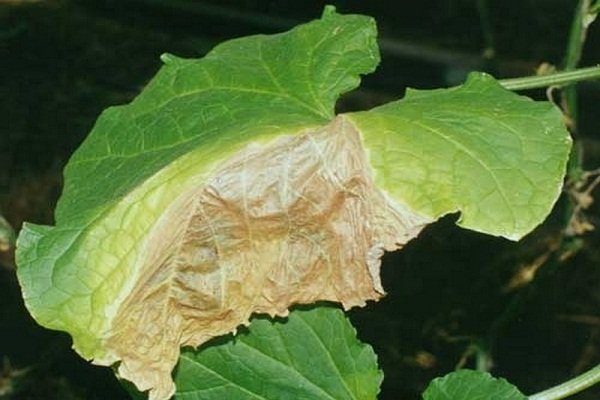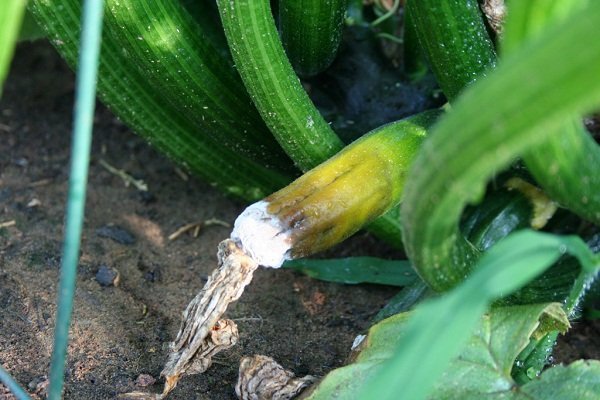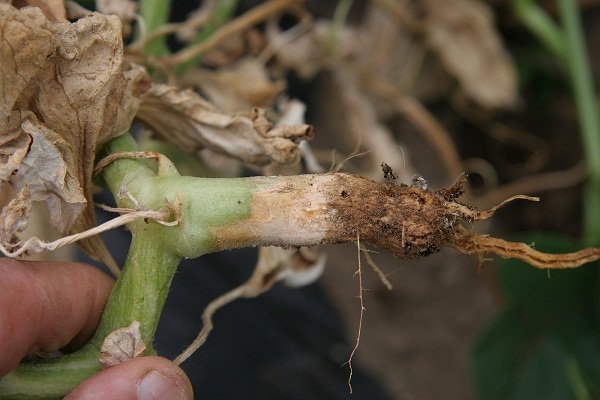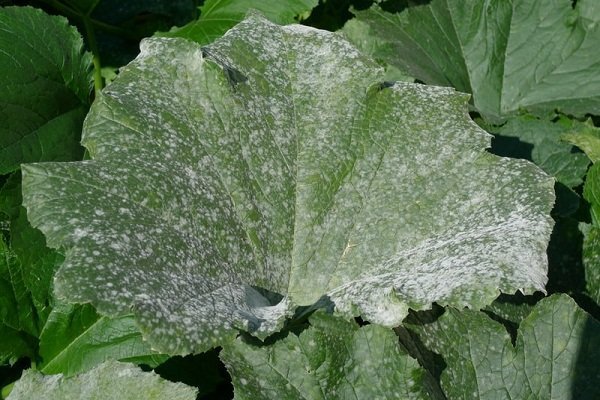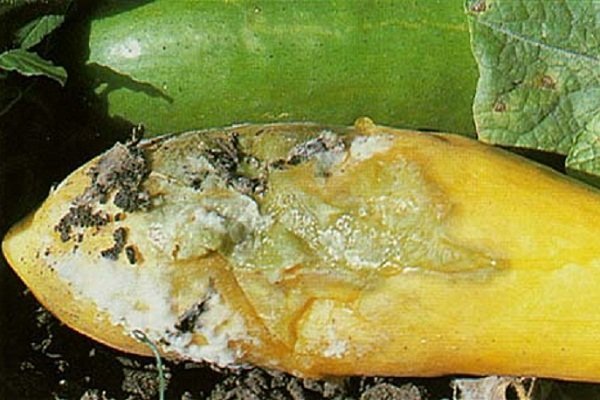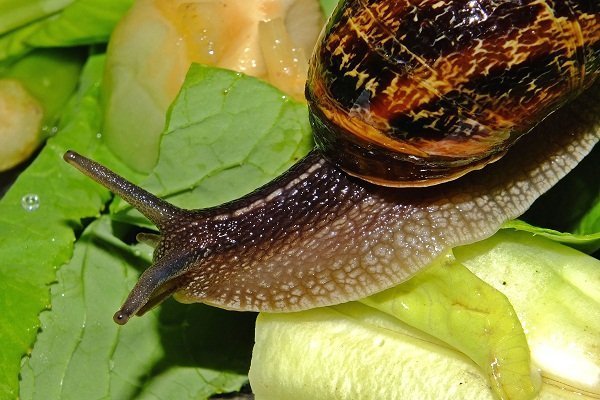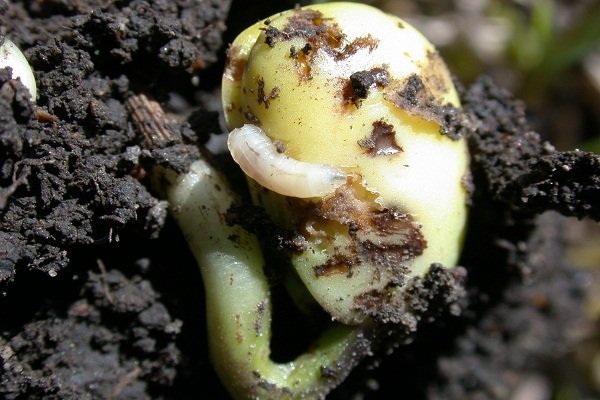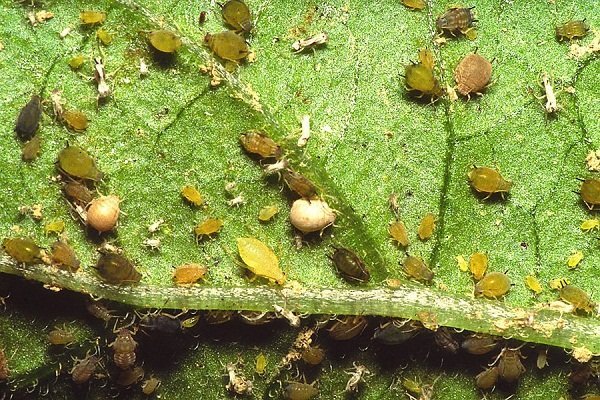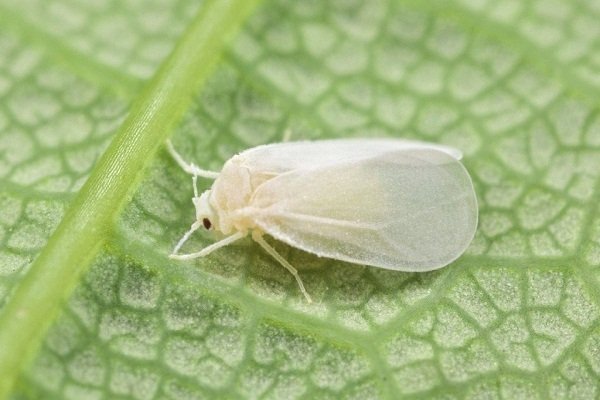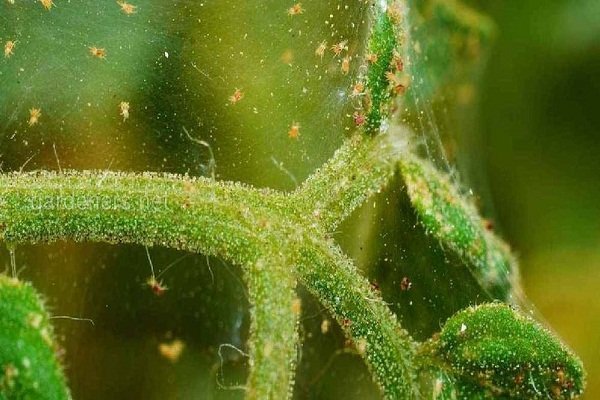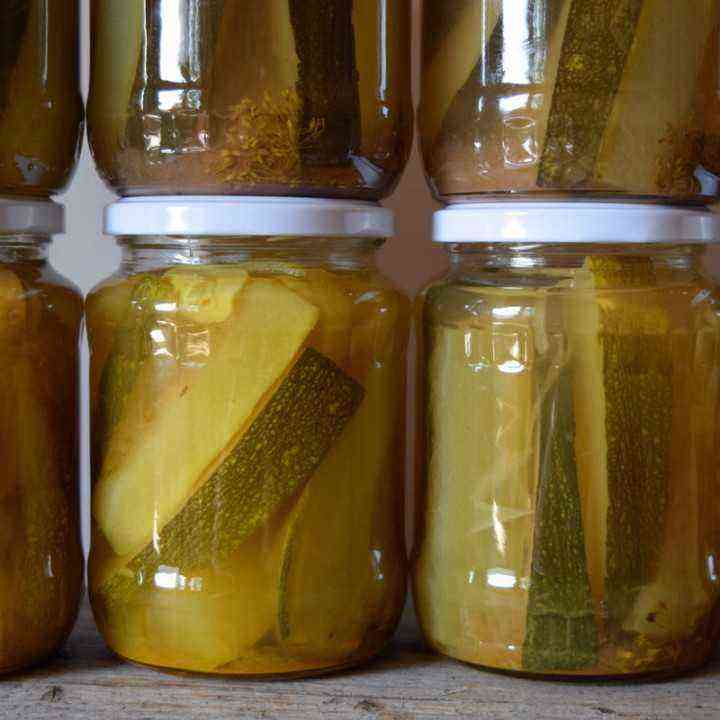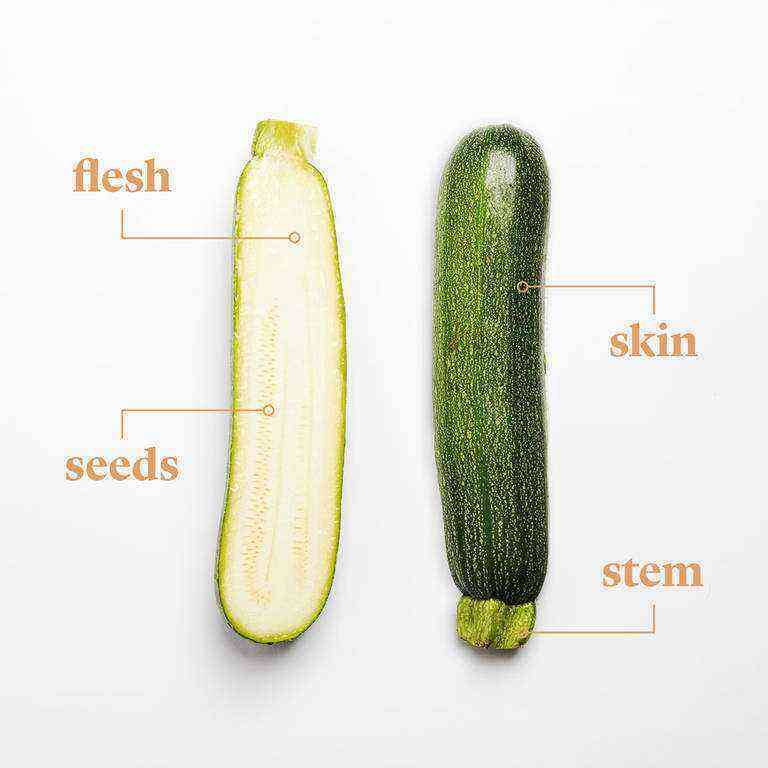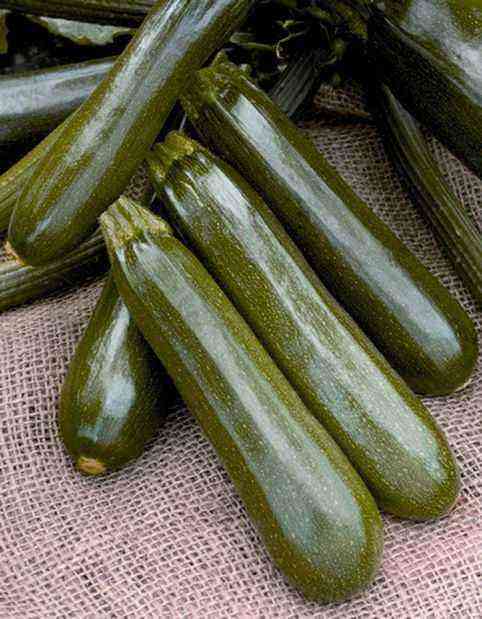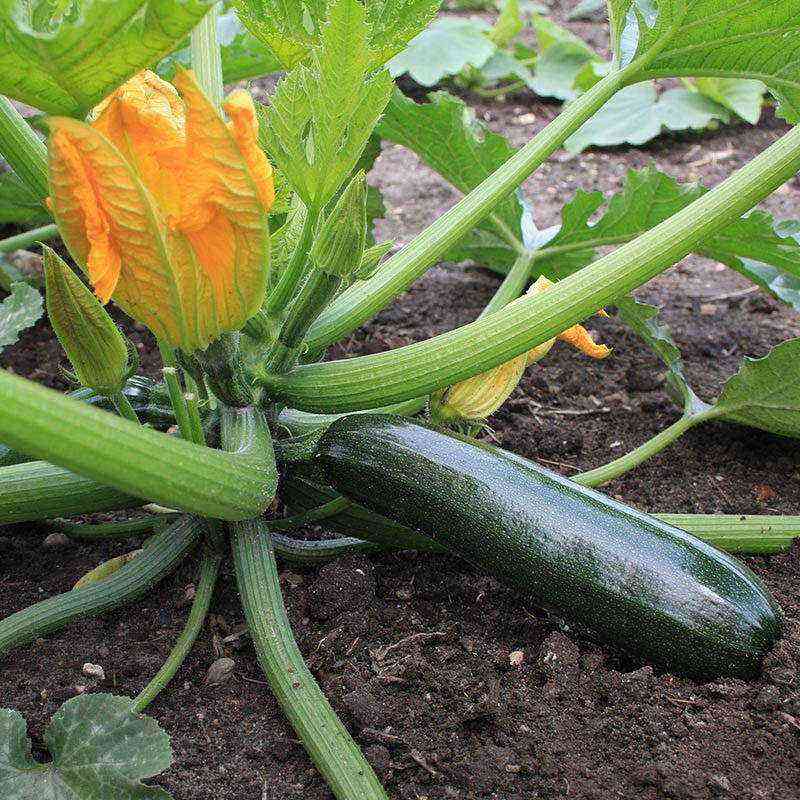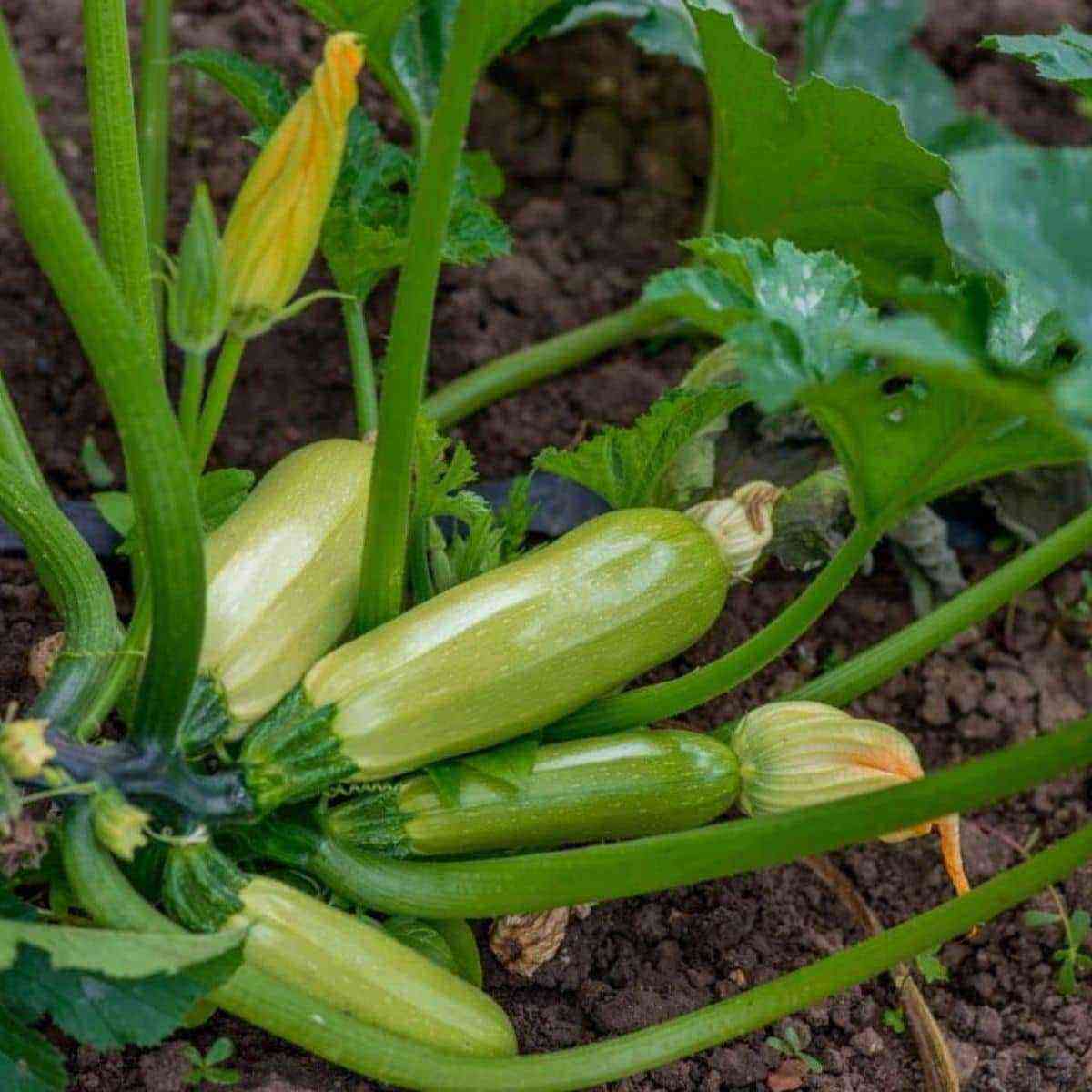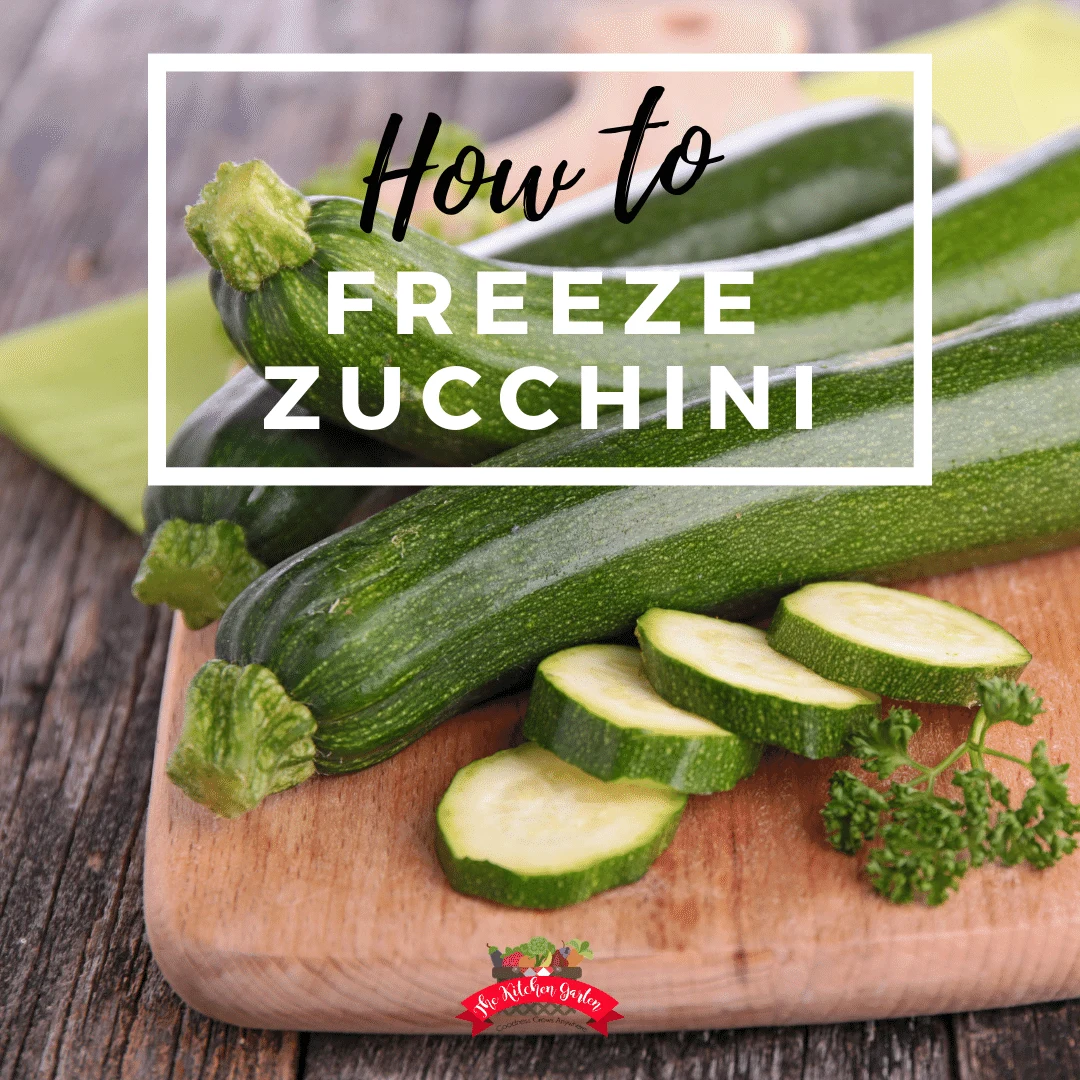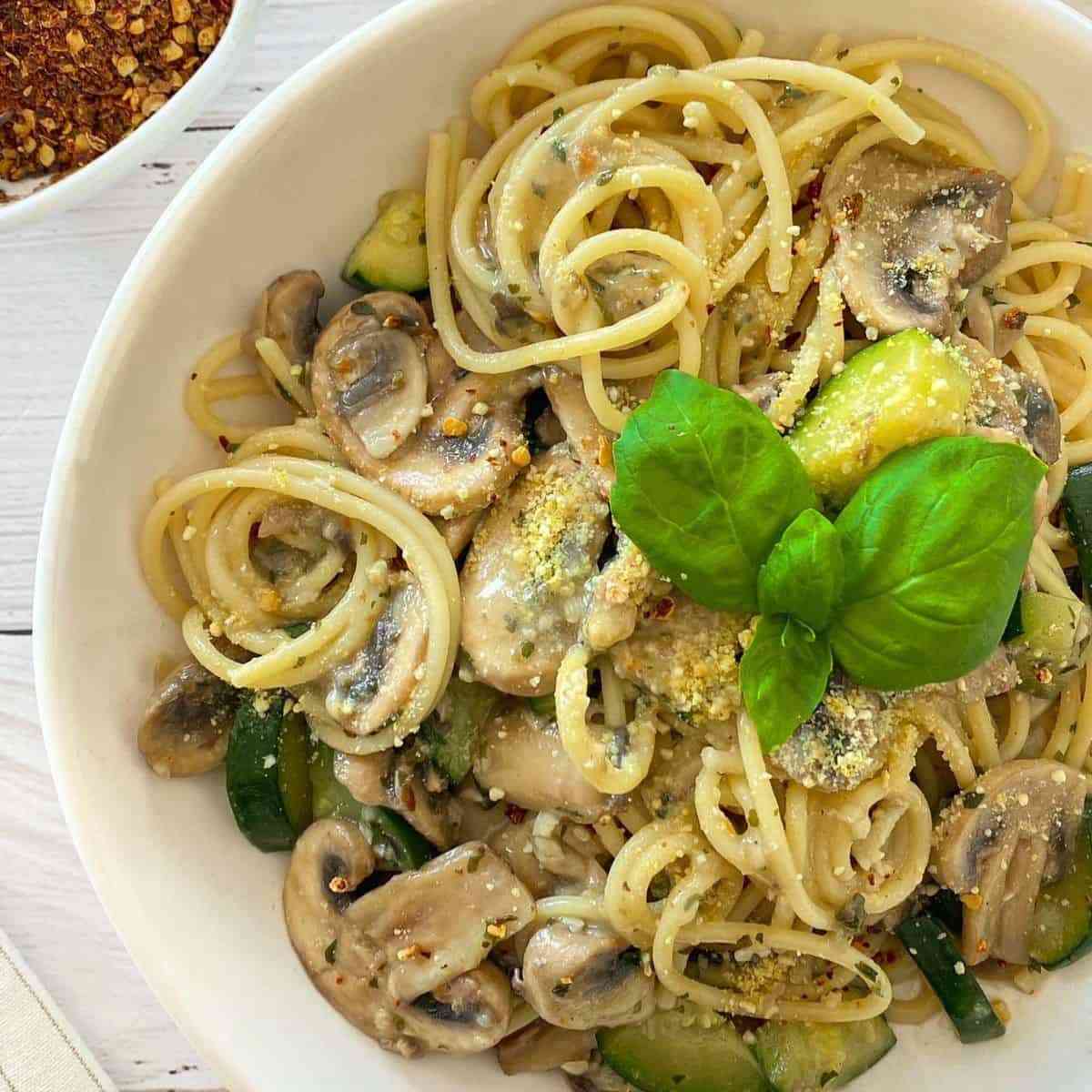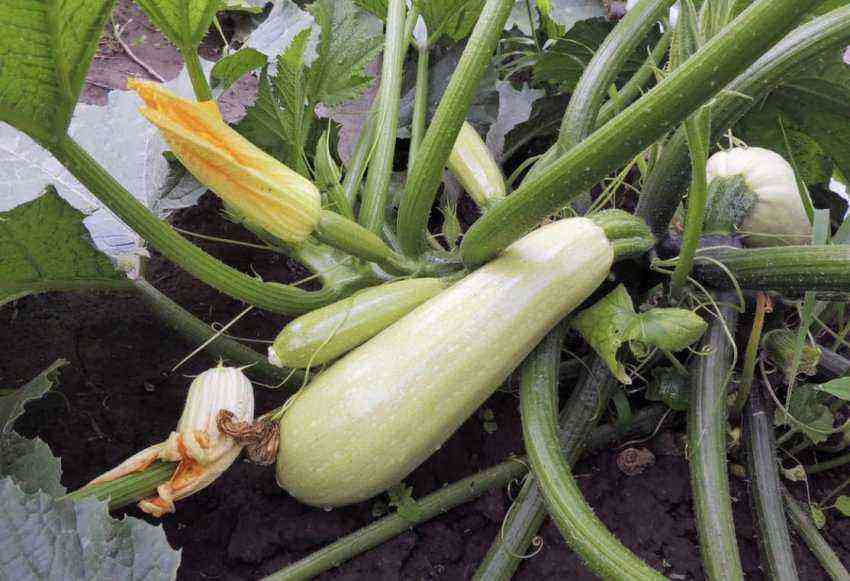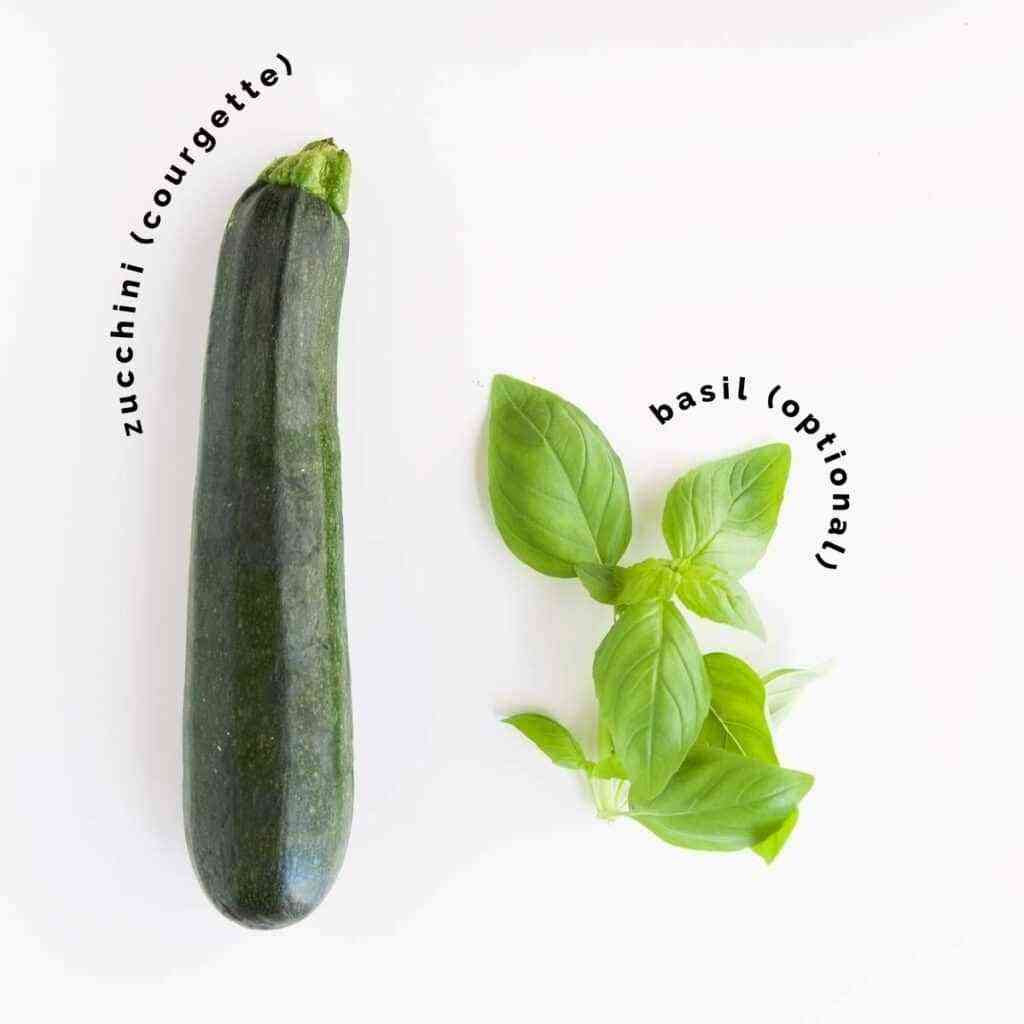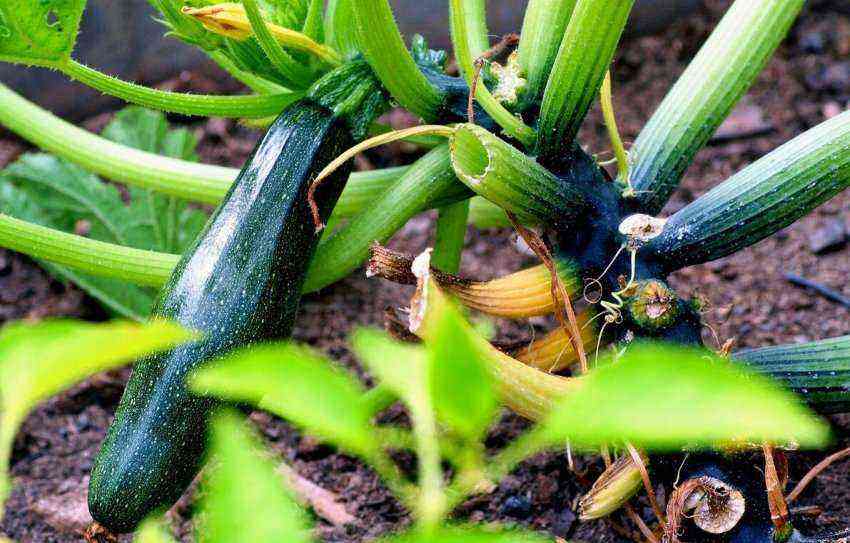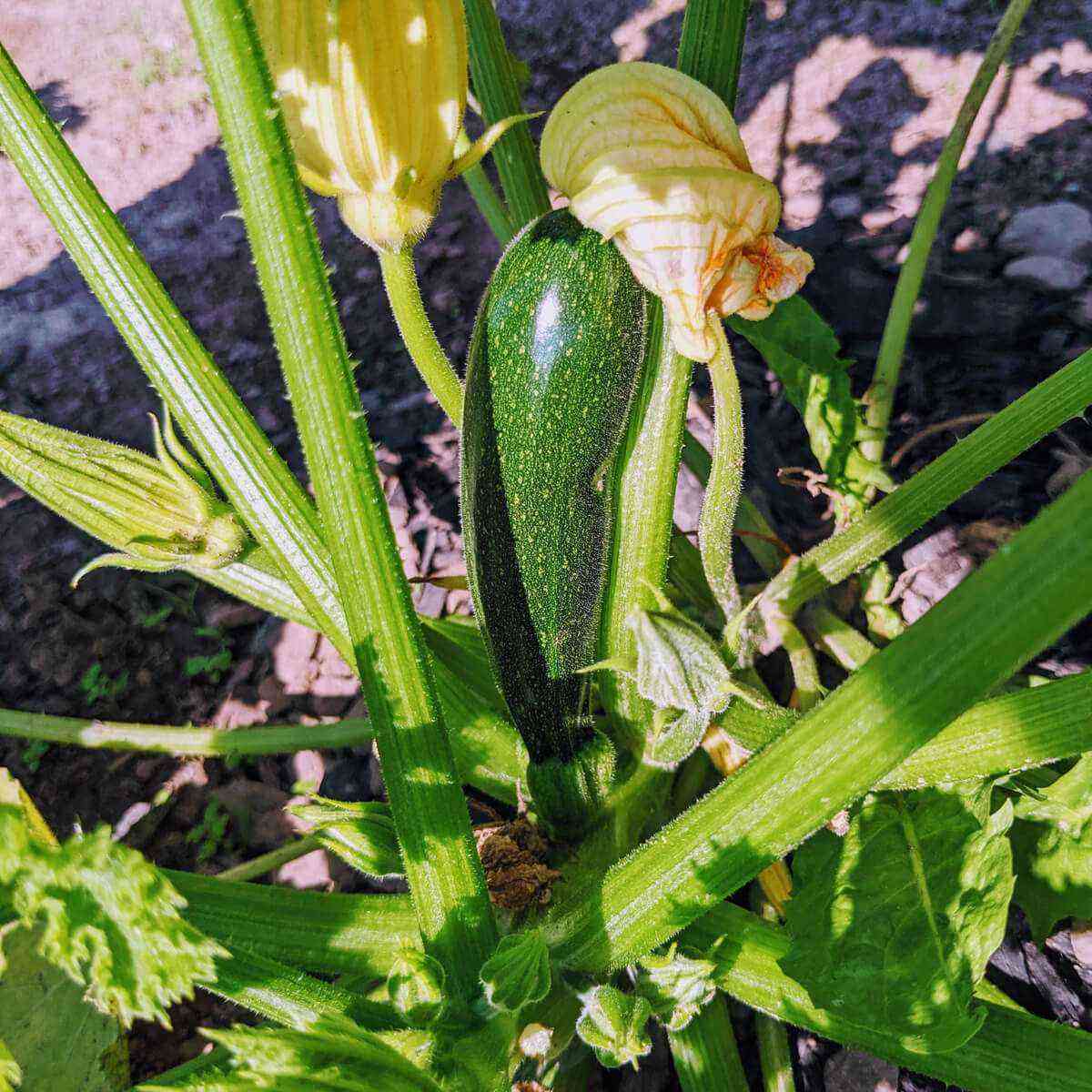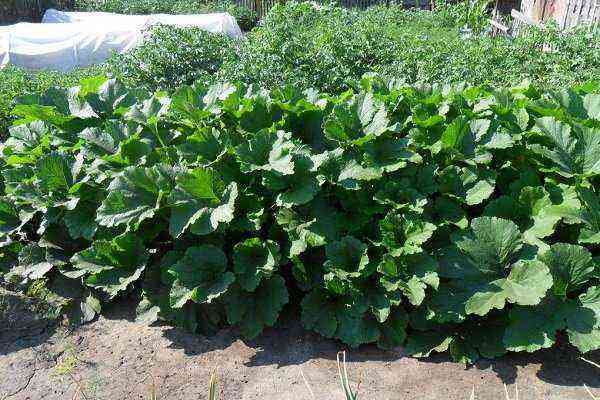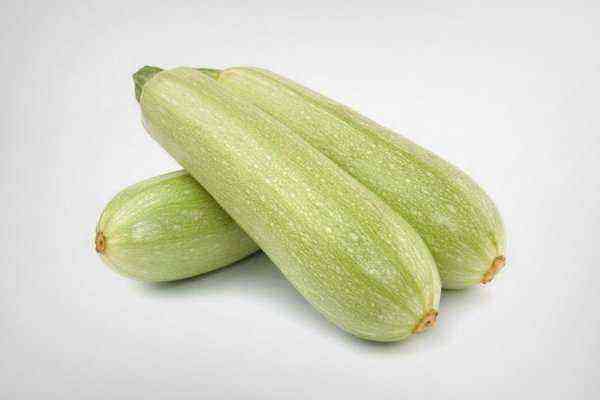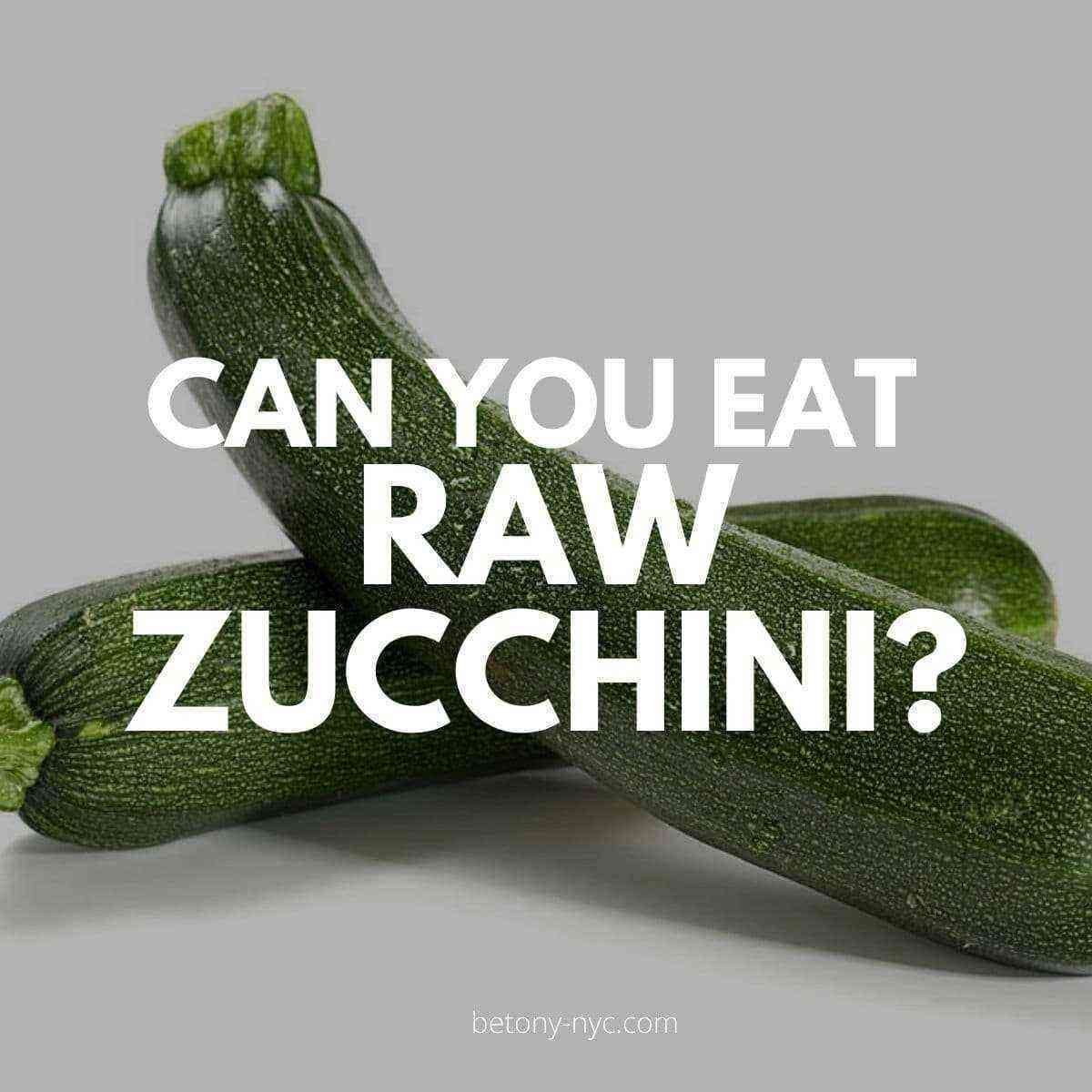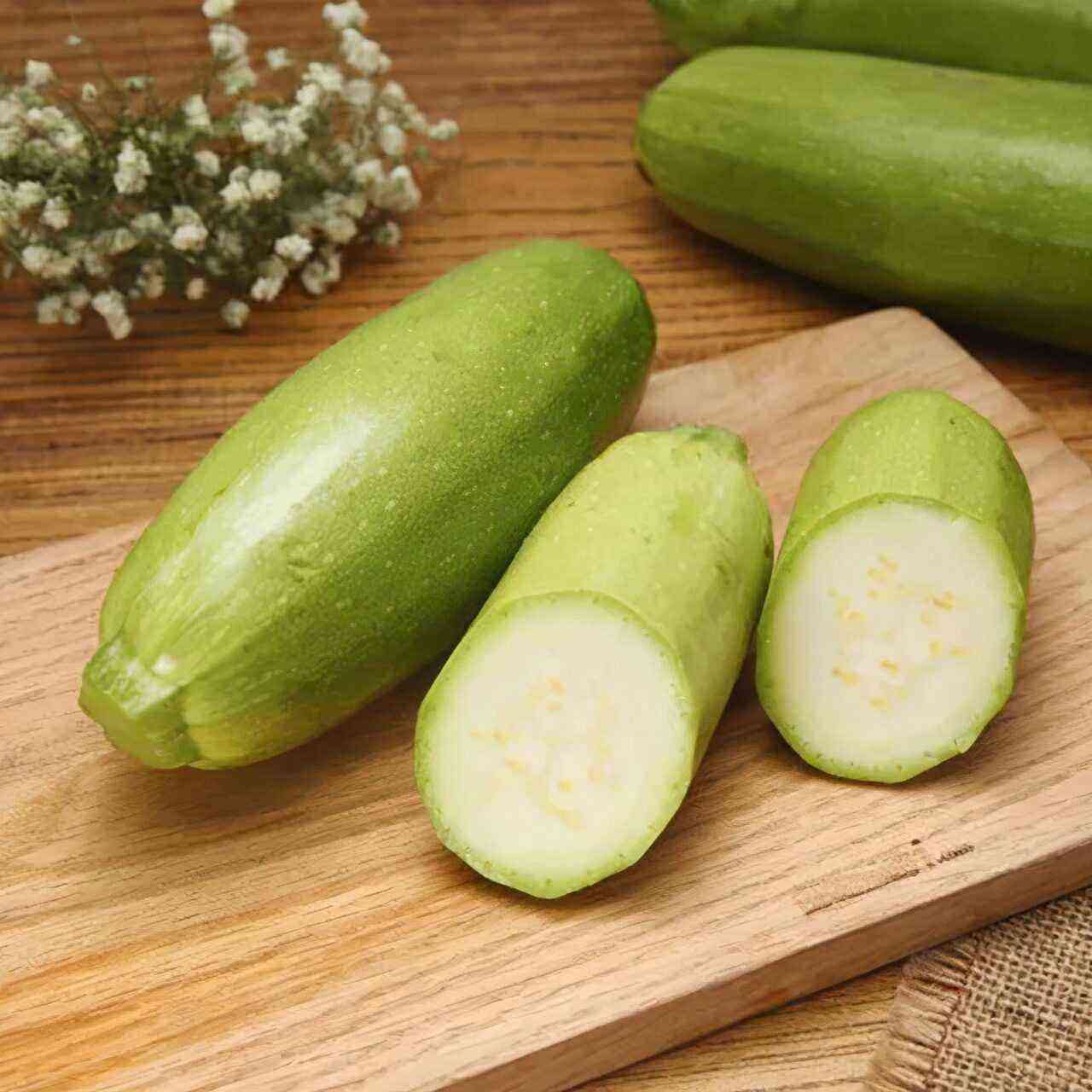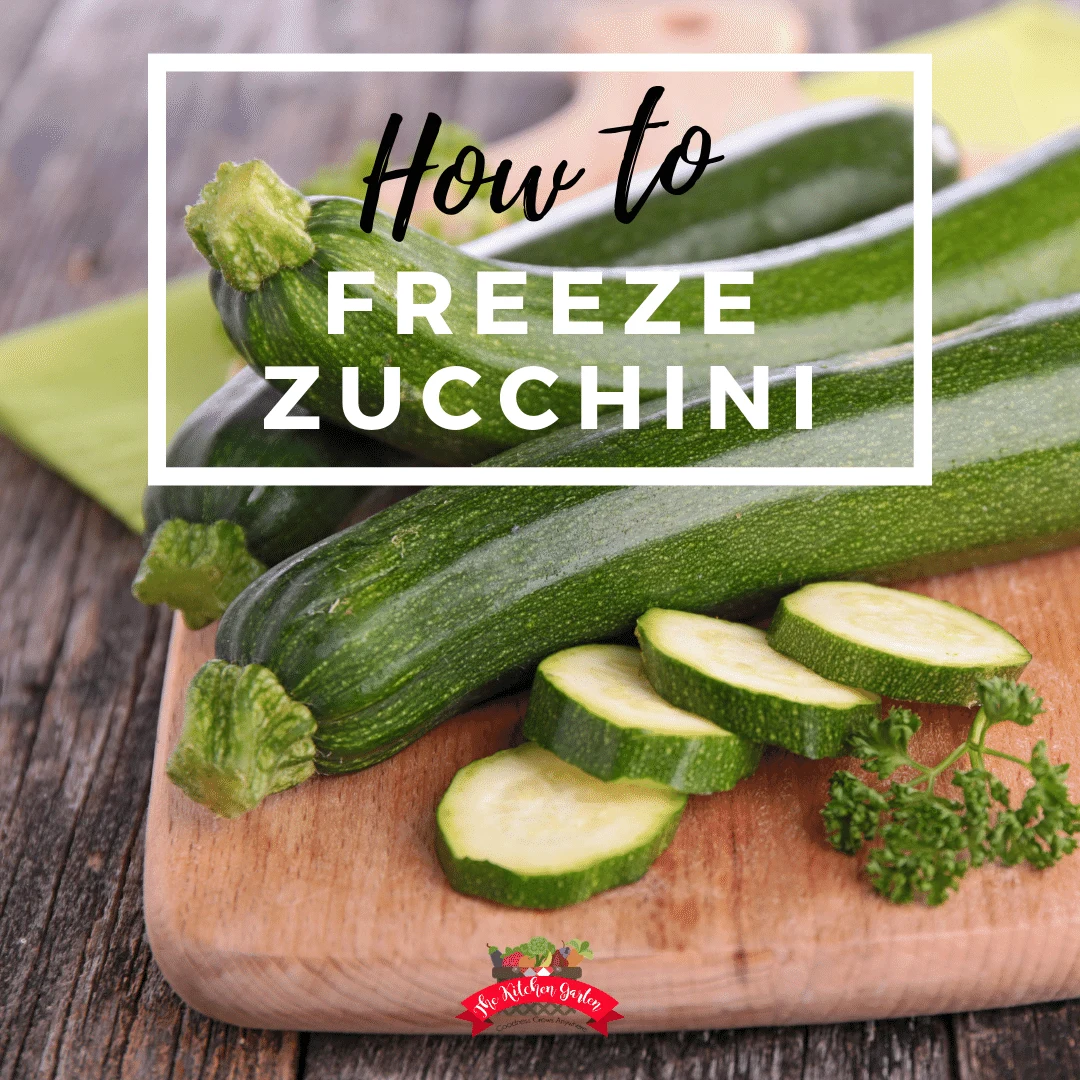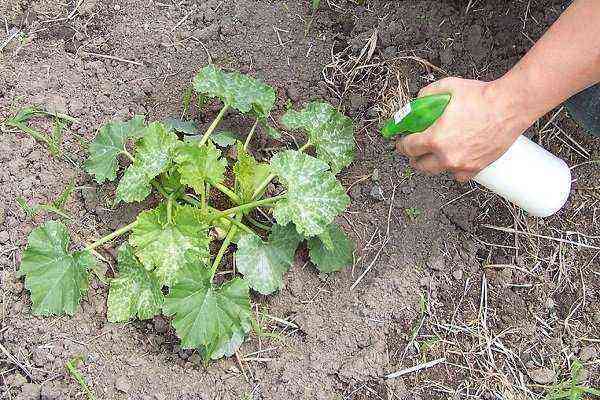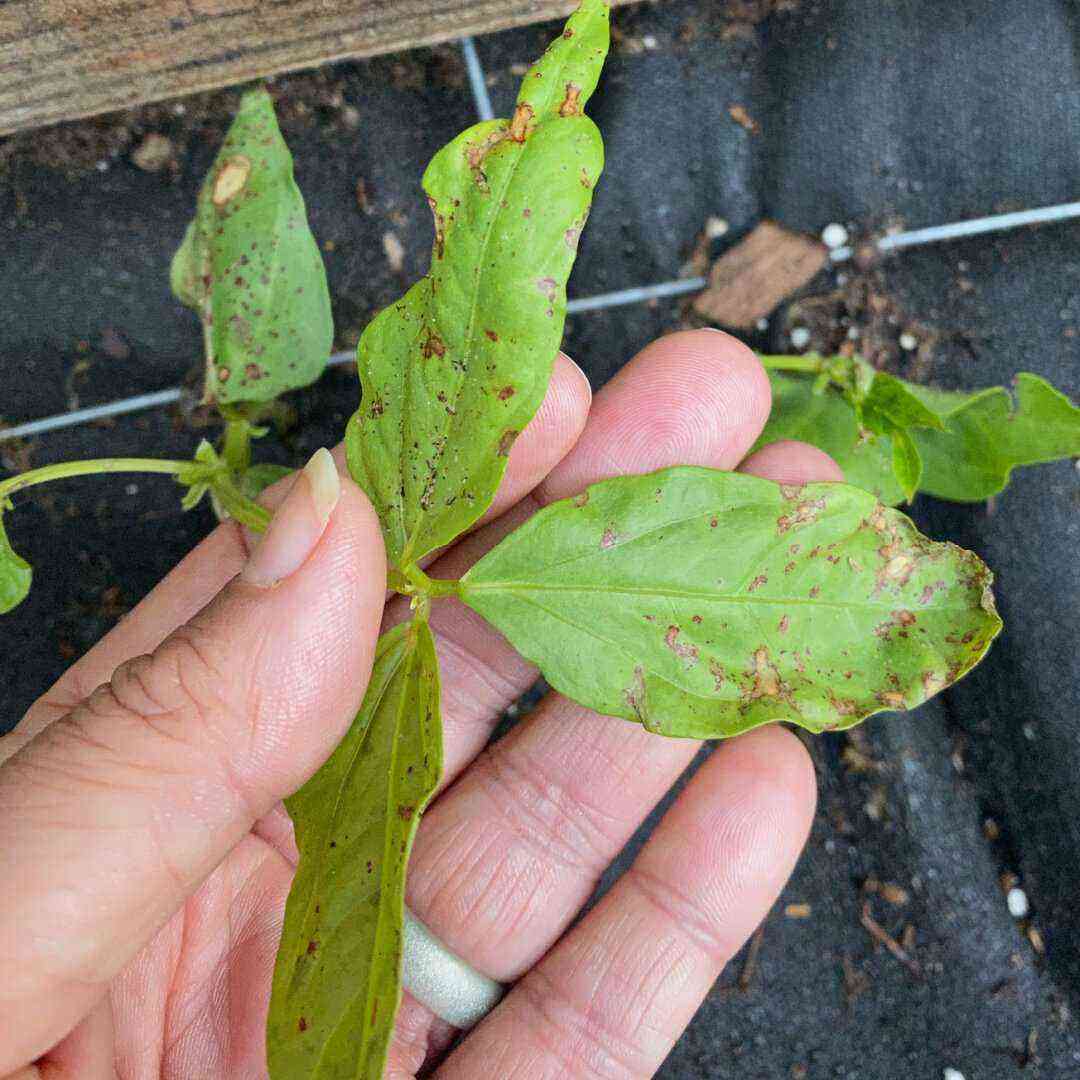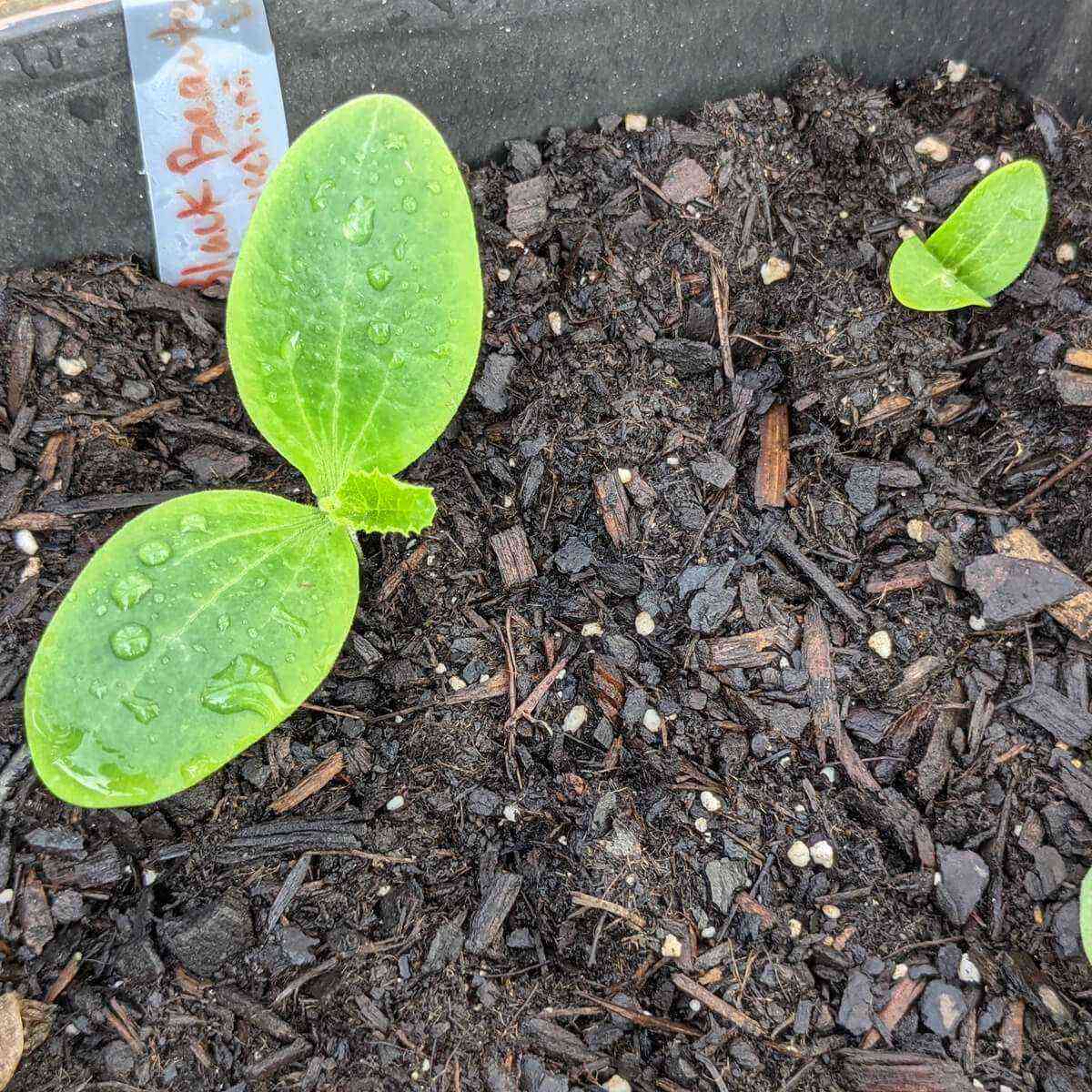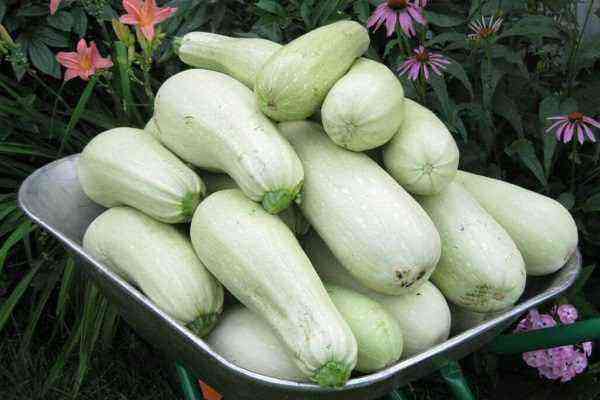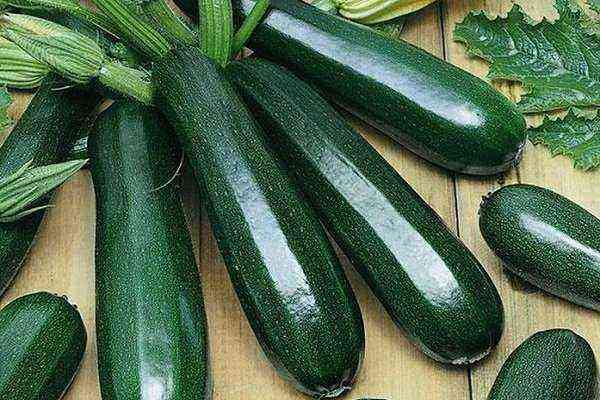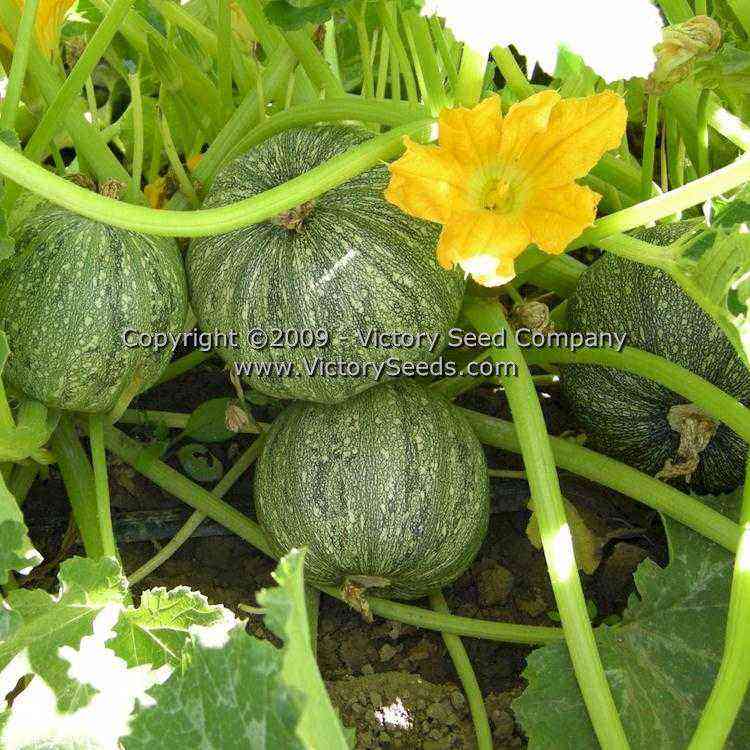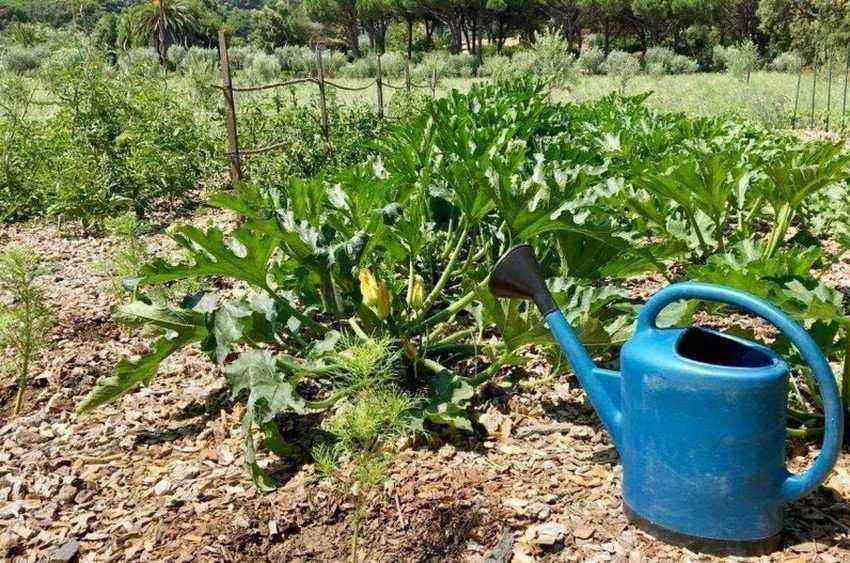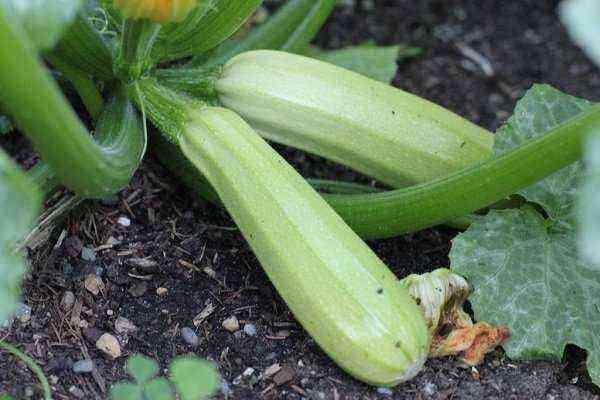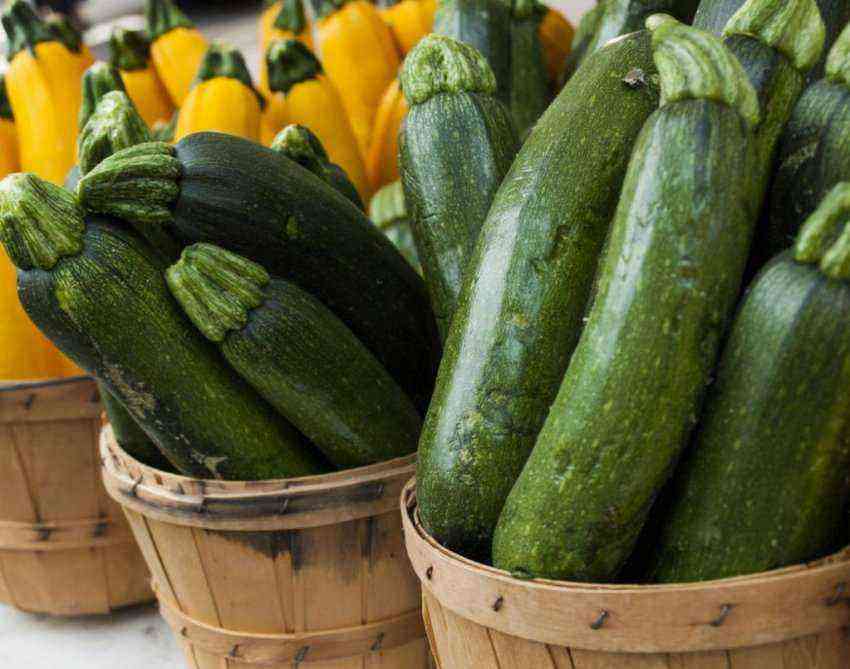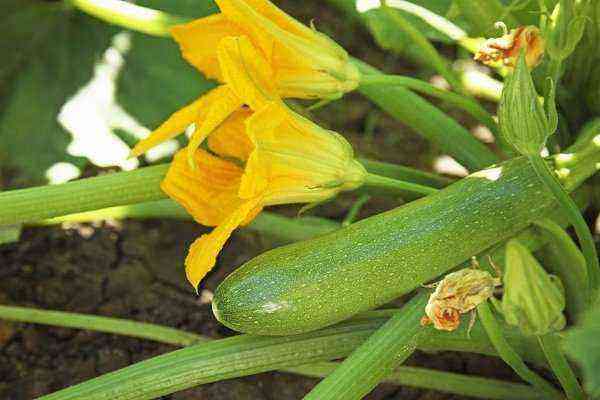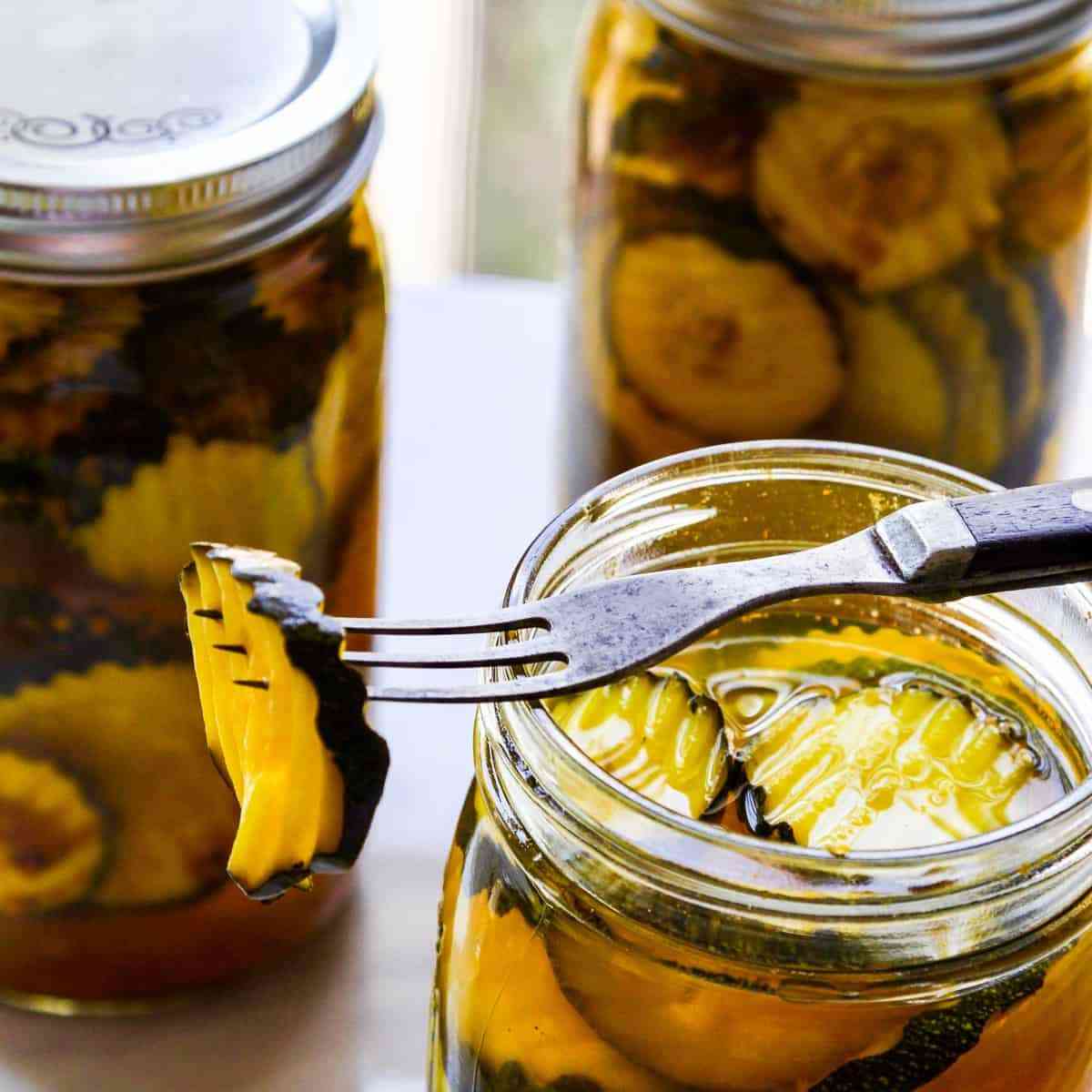Zucchini or zucchini can be affected by various diseases, which not only adversely affect their presentation, but also significantly reduce the yield of this crop. Some pests are no less dangerous for her. To keep your landing from such threats, it is important to be aware of them in advance.
List of squash diseases
Depending on the type of pathogen, squash pathologies are fungal, viral and bacterial. These infections attack not only the surface of the leaves and stem, but also the fruits themselves, so they lose their nutritional value. From what pathologies you need to protect your crop, we will consider separately.
Anthracnose
Why arises? This fungal disease is caused by a fungus of the genus Colletotrichum. It mainly affects weak and mechanically damaged plants at any stage of development. Copperhead is more observed in greenhouse and greenhouse crops, but does not bypass zucchini in the open field. Favorable conditions for its development:
- soil with high acidity, which is fertilized with an insufficient amount of potash and phosphorus supplements;
- watering in the heat;
- increased humidity of air and soil;
- poor cleaning of the site from crop residues.
Evidence. Anthracnose attacks all vegetable organs:
- The leaf plate is covered with rounded yellow or brown spots that have a dark brown or purple border. Over time, they grow and spread to the rest of the plant, and the leaves curl and become spotty.
- On the stems, flowers and fruits, brown depressions with a pink bloom are formed.
- Gradually, lesions deepen into the thickness of the plant, blocking the movement of water and nutrients. Against this background, the fruits gradually wrinkle, acquire a bitter aftertaste and begin to rot.
- If the disease affects the root part of the seedlings, then they are likely to die.
Control measures. At the initial stage of development of the copperhead, the leaves can be sprinkled with a 35% solution of colloidal sulfur (40-100 g per 10 l of water) or a 1% solution of Bordeaux mixture (100 g of copper sulphate and quicklime per 10 l). In case of severe lesions, the leaves should be watered once every 1 weeks with biological preparations for zucchini or other pumpkin (for example, Fitosporin). In case of mass infection, the plants will have to be destroyed. If the seedlings grow in a greenhouse, then after harvesting it will need to be disinfected with bleach (2 g per 200 liters of water).
Anthracnose can be transmitted through seeds, so seedlings should be carefully selected before planting in the ground. The inoculum itself can be treated with a 0,2% solution of boron, copper and manganese. It is equally important, if necessary, to reduce the acidity of the soil by digging it with wood ash, dolomite flour or lime, and also to apply fertilizers containing phosphorus and potassium.
Ascochitosis
Why arises? Ascochitosis is a consequence of excessive soil and air moisture at low temperatures. The causative agents are fungi of the genus Ascochyta. The infection remains even on crop residues, and zucchini rot.
Evidence. Fungal disease affects all above-ground parts of the plant. On the stems and leaf plate, light black spots appear with pronounced black specks – pycnidia of the fungus. The affected areas quickly turn black, become soft and dry, and the plant dies. As a rule, ascochitosis affects the base and branching of the stems, due to which they lose their elasticity and break. Infection of the root part of the vegetable in conditions of excessive soil moisture is not excluded.
Control measures. The affected areas should be powdered with copper-chalk powder (a mixture of chalk and copper sulfate 1: 1). Additionally, they need to be treated with crushed coal to dry the affected tissues and prevent the spread of infection.
Bacteriosis
Why arises? It is considered the biggest threat to zucchini and other cucurbits, since it irreversibly affects not only parts of the plant, but also the root crops themselves. The causative agent of pathology is carried by insects, drops of water, plant debris. In this case, the infection persists on seeds and plant tissues. The following conditions contribute to the development of bacteriosis:
- sudden changes in temperature during the day and at night;
- high soil and air humidity;
- planting seeds without pre-treatment;
- poor cleaning of the site after harvest.
Evidence. Depending on the type of bacteriosis:
- Angular leaf spot. It makes itself known even at the stage of the appearance of cotyledons. The spots on the leaves undergo such a transformation – they become dark green, and then brown, dry out and fail, forming angular holes between the veins. The fruits are covered with stormy watery sores, because of which they are deformed.
- Apical bacteriosis of fruits. At the tip of the zucchini, they first turn yellow, and then become covered with brown-brown spots. The base continues to grow. Eventually, the roots become glassy and rot.
Control measures. Before planting, the seeds must be soaked for a day in a 0,2% solution of zinc sulfate, and then dried thoroughly. They can be treated with Fitosporin-M or another fungicide. With this composition, it is also worth watering the garden bed 5 days before planting seeds or seedlings. For prevention purposes and at the slightest suspicion of bacteriosis, shoots should be treated with 1% Bordeaux mixture or 0,4% copper oxychloride solution. However, it is important to stop spraying the fruit 15 days before harvest. If there is serious damage, it is impossible to help the plant, so it will have to be uprooted and destroyed.
White rot (sclerotinia)
Why arises? The source of infection is sclerotia, which fall from plants and hibernate in the ground, and attack the plant in spring. It is especially susceptible to disease during the fruiting stage. The following factors contribute to infection:
- excess nitrogen in the soil combined with low ambient temperature;
- excessively thickened landings;
- sudden changes in temperature;
- an excess of nitrogen supplements.
Zucchini can become infected with sclerotinia through air currents, as well as due to pieces of mycelium in the stomata and mechanically damaged places.
Evidence. The fungus affects all parts of the plant – fruits, mustaches, leaves and their petioles, stems and roots. Initially, a flaky white coating forms on them, and then black dots appear – fungal spores. The affected parts become soft, covered with mucus, soften, rot and die. As a result, the fruiting of the plant is disrupted.
Control measures. If symptoms of white rot are observed on the bushes, in particular, a white coating on the leaves is noticed, it is necessary to start the fight against the pathogen. The following measures will help in this matter:
- powder the diseased areas with a mixture of crushed chalk and copper sulfate powder (1: 1);
- sprinkle the surface of the affected areas with crushed coal to dry them and stop the spread of infection;
- when infecting a zucchini in a greenhouse, reduce air humidity and regularly ventilate the room to prevent the mass spread of sclerotia;
- with a strong spread of white rot in dry and hot weather, remove the leaves of the plant, and sprinkle the cut points with crushed coal or wipe with a 0,5% solution of copper sulphate;
- water the plant with warm water;
- carry out root feeding (1 g of zinc sulfate, 2 g of copper sulfate and 10 g of urea per 10 liters of water), as well as apply phosphate fertilizers and calcium supplements (ground chicken egg shells or wood ash at the rate of 200 g per 1 sq. m. site);
- Pour the soil with a solution of Fitolavin, and also add compost to maintain the microflora.
If the fruits are covered with a white coating, they are not to be eaten. They need to be separated from the rest of the crop and destroyed so that the sclerotia cannot spread to healthy areas.
In order to prevent white rot, bushes can be sprayed with a composition of 1 g of copper sulfate, 1 g of zinc sulfate and 0,5 tbsp. l. urea per 10 liters of water.
root rot
Why arises? It is a consequence of excessive application of organic top dressing. It also occurs due to sudden changes in temperature, weakening of the vegetable crop, watering with cold water (up to 20 ° C) or a clogged garden bed.
Evidence. The disease affects the plant at the stage of fruit formation. At the same time, the root system, stems and necks rot, and the affected tissues darken and turn brown, become rotten and soft. The lower leaf plate is covered with yellowness. All this stops the growth of the plant, it withers and eventually dies.
Control measures. For preventive purposes, 3 weeks before planting, the seeds can be treated with Tiram (5-7 g per 1 kg of seed). If there are suspicions of the development of root rot, it is worth adding soil to the stem to form new roots. In addition, you need to water the plant with a 0,1% Previcur solution (200-300 ml for each bush). You can also use solutions containing metalaxyl (mefenoxam). Infected plants will have to be removed from the garden and burned, and the soil treated with copper sulfate.
yellow mosaic
Why arises? This is not a fungal, but a dangerous viral disease that is extremely stable in the external environment and easily spreads throughout the garden. The carriers of the virus are pests – aphids, thrips and whiteflies. In addition, the disease is transmitted through infected seeds, soil and plant debris. Mosaic pathogens can stay in the ground for several years.
Evidence. With the development of the mosaic, star-shaped white-yellow spots appear on the leaves, which gradually grow, causing the young upper leaves to curl first, and then the lower ones. Affected fruits develop white and yellow stripes.
Methods of struggle. The disease is not treatable, so the entire planting will have to be pulled out and burned, and the infected soil replaced with a new one in order to get rid of the pathogens of the mosaic. To prevent its development, you need to use the seeds of only uninfected plants, and before planting, disinfect them by soaking for 60 minutes in a 15% solution of trisodium phosphate.
Fusarium wilt (Fusariosis)
Why arises? It is provoked by soil fungi that can affect the plant at any stage of development. Pathogens penetrate into the root system of a vegetable from the soil, are active in the vessels that conduct it, and gradually grow.
Evidence. Fusarium is primarily indicated by the yellowing and weakening of the upper leaves of the bush. In the root part, the stems turn brown, covered with a pink or orange bloom and rot. On their cross section, browning of the veins can be seen. It affects the disease and the root system, due to which the plant dries up and dies within a few days.
Control measures. If the pathology is detected at the initial stage of development, then the bush and the ground around it must be powdered with wood ash. However, this will not be enough. To accurately get rid of fusarium, you need to improve the soil – plant green manure, apply organic and mineral fertilizers, remove weeds, add EM products and calcium preparations.
white powdery mildew
Why arises? A fungal disease, the pathogens of which overwinter on the plant remains of weeds – plantain, thistle, etc. During the growing season, they spread to vegetable crops, which is especially facilitated by such factors as winds, high air humidity, rare watering, excessive fertilizing with nitrogen fertilizers.
Evidence. They often appear on leaves and, to a lesser extent, on stems and petioles. Powdery mildew is manifested by rounded white spots of small sizes, which are called flour plaque. Gradually, they increase in size and cover the entire leaf plate with a powdery white coating, which subsequently turns yellow and dries out. The tops themselves curl and dry out due to a violation of the photosynthesis process. This is the sporulation of the fungus, which absorbs all the nutritious juices from the culture and makes it impossible to form full-fledged fruits with a pleasant taste.
On severely affected foliage, fruiting bodies (cleistocarps) are formed, which infect the plant next year.
Control measures. So that white powdery mildew does not destroy the entire crop and does not threaten future plantings, at the first defeat, the planting should be sprinkled with this remedy:
- 35% solution of colloidal sulfur;
- 0,5% sodium phosphate solution;
- 10% isophrene solution.
Plantings can be treated every 10 days with 80% sulfur powder (400 g per 100 sq. M) or powdered with ground sulfur (300 g per 100 sq. M), which should be applied to the affected areas with a cotton swab. The last treatment must be done 10 days before harvest. If there are specimens with severe lesions, on a sunny day (at a temperature not lower than 23 ° C), they must be cut off immediately, and the plant should be pollinated with ground sulfur. If the weather is cloudy, it is better to use the same colloidal sulfur solution (40 g per 10 liters of water) for processing.
To protect the zucchini from white powdery mildew, it can be sprayed with mullein infusion. To prepare it, 1 kg of raw materials should be poured with 3 liters of water, left for 3 days, strained and diluted with water at the rate of 1 liter of infusion per 3 liters of water.
Downy mildew (perinospora)
Why arises? It affects zucchini at all stages of their vegetation also due to the vital activity of fungi. It has the same description as white powdery mildew.
Evidence. The leaves on the outside are covered with yellow-green spots, and on the bottom – with gray-purple spores of the fungus. Gradually, the spots expand their boundaries and unite, causing the leaves to drill and dry. In some cases, the outer part of the leaf plate is also covered with a white coating. The disease progresses quite quickly.
Control measures. For disinfection, seeds before planting should be soaked for 20 minutes in a 1% solution of potassium permanganate or for 15 minutes in hot water (+ 50 ° C). If the disease manifests itself, then for the duration of treatment it is necessary to stop watering the plant. Sick specimens can be treated with 1% Bordeaux mixture, Topaz or Oxychum. Intact leaves should be fed with a tank mixture, a solution of copper oxychloride, a mixture of fungicides and growth stimulants.
Black rot (mold)
Why arises? It is provoked by spores of the fungus of the genus Aspergillus. The development of black rot spurs the violation of the rules of agricultural technology, high humidity and strong temperature changes.
Evidence. The disease manifests itself on leaves and other ground parts of squash. The plant is covered with small light brown spots, which can stick together and form foci of necrosis. As a result, they are covered with a black coating – fungal spores. For this reason, the tops turn yellow and dry out, and the fruits lag behind in development, shrivel and rot.
Control measures. If you do not respond in a timely manner to the appearance of black rot, then soon all the zucchini on the site may get sick. Sick specimens must be removed from the garden and burned.
Gray rot (botrytis)
Why arises? It is a type of putrefactive mycosis. The spores of the fungus that provoke it can be found on the green of weeds and are carried by insect pollination from one flower to another, which increases the prevalence of the disease. The following factors also contribute to this:
- adverse weather conditions – sudden changes in temperature, excessive humidity of air and soil;
- poor care (irregular watering, the use of cold water from a well or water supply, watering after sunset, an excess of nitrogen fertilizers or a lack of trace elements).
Evidence. Botrytis often affects young squash. Leaves and fruit ovaries suffer from it. They acquire a watery consistency, turn brown and gradually become covered with a gray coating. Black dots also appear on them – fungal spores that can persist in the soil for up to 2 years.
Control measures. Sulfuric rot will not occur if weeds near the vegetable are removed in a timely manner, agrotechnical rules are followed, phosphorus fertilizers and foliar fertilizing are applied, and zucchini is examined every 10 days. If affected areas are found, they should be powdered with a mixture of copper sulfate and crushed chalk (1: 2). Plantings should also be sprayed with a solution of 10 g of urea, 2 g of copper sulfate and 1 g of zinc sulfate per 10 liters of water. It is advisable to remove diseased ovaries and fruits, and then destroy them.
olive blotch
Why arises? A fungal disease that affects seedlings, leaves and stems due to high humidity. In hot weather, it appears towards the end of the growing season of zucchini, when cool nights come with a considerable amount of dew. In the greenhouse, the pathogen spreads with drops of condensed moisture, and in open ground – by wind, during irrigation, or with rain. The infection persists for a long time in the soil and on plant debris.
Olive blotch actively progresses in conditions of sharp temperature changes and cool rainy summers.
Evidence. Pathology affects all terrestrial parts of the plant. Brownish spots of various shapes appear on the leaves with a lighter border and a lighter center. Ulcers form on the petioles of leaves and shoots, which are covered with an olive bloom. As for the fruits, watery small ulcers also appear on them, which rapidly expand in size and lead to cracking of the skin. As a result, zucchini is bent, and young ovaries are dying.
Control measures. With the development of olive blotch, the planting should be treated with 1% Borodskaya liquid (100 g of copper sulfate and the same amount of lime), a suspension of 80% Kuprozan.
List of squash pests
For vegetable crops, not only the listed diseases, but also some pests are dangerous. Why do they attack the landing and how to get rid of them, we will understand further.
Slugs and garden snails
Description. These are gastropod molluscs, reaching a length of 2-3 cm to 10 cm. Their body is thick, worm-like and completely covered with mucus. Snails have the same description, only their body is under the shell. In sunny and dry weather, these pests hide in damp and secluded places, but after dark they crawl out and attack vegetable crops in the garden.
Signs of defeat. Mollusks gnaw out embryos in seeds, eat leaves on shoots and gnaw through stems, causing the death of the entire plant. When young zucchini appear, they also eat the pulp in them and even thread their moves. They not only reduce yields, but also spoil the presentation of vegetables, leaving behind mucus and other secretions.
Control measures. The primitive method of fighting mollusks is mechanical. It involves the collection of shellfish by hand or with the help of special traps made from pieces of burlap or plywood and located around the entire perimeter of the site. Around plantings, you can also dig protective grooves up to 30 cm wide and fill them with needles, sand or sawdust to prevent the advance of pests. Against them, you can also use Metaldehyde granules (4 g per 1 sq. M), a solution of copper or iron sulfate, lime.
sprout fly
Description. These are small gray flies with a dark longitudinal line on the belly. In length, they reach 3-5 mm. Flies lay their eggs under soil lumps. After 5-10 days, white larvae already appear from them, narrowed in front, with teeth at the end of the body and up to 7 mm long, which are capable of destroying all crops in 2 weeks, especially in cold summer conditions. The larvae then pupate. During the warm season, 2-3 generations of insects may appear.
Signs of defeat. Pests can be found on plant shoots. The larvae destroy the germinating seeds, gnaw through the hypocotyl knee and penetrate inside the stem. As a result, the young plant may die.
Control measures. If in the fall you dig deep into the soil with the introduction and careful incorporation of manure, then this will be an excellent prevention from flies. In the spring, before the start of the summer season, Karbofos or Fufanon should be introduced into the soil. Seedlings can be pollinated with wood ash, ground black pepper, or tobacco dust. Salt solution is suitable for irrigation (200 g per 10 liters of water).
Melon Caviar
Description. Aphid is a small insect (3 mm), which not only gnaws leaves, young shoots and buds, but also carries dangerous infections. Aphid females are wingless, have an oval body 1,25-2,1 mm long, and are dark green or black in color. The larvae are yellow or green, with or without wings. The insect reproduces asexually and gives 14-20 generations per season.
Aphids develop on weeds, on which they hibernate, but with the advent of spring and the air warming up to + 12 ° C, they move to pumpkin plants, including zucchini. The optimum temperature for her life is + 16 … + 22 ° C. Colonies of adult pests and their larvae settle on the lower part of the leaves, shoots, ovaries and flowers.
Signs of defeat. The melon aphid eats green tops, as a result of which the shoots, leaves and flowers turn yellow and curl, and then dry up and fall off. With a large invasion of pests, flowers fall off the bush. The plant lags behind in growth, and then dies.
Control measures. In order to prevent the invasion of aphids, the following crops should be planted near the beds with zucchini:
- spicy plants (mint, coriander, fennel);
- flowers (lavender, marigolds);
- garlic, onion, mustard, basil.
You can also scare away pests from zucchini with a soapy solution (100 g per 10 liters of water) and pollination with powdered sulfur.
If a small number of pests have already settled on the plant, sparing folk remedies can be used in the fight against them:
- Infusion of tobacco. To prepare it, 1 part of the raw material must be poured with 10 parts of water and left for a day. Dilute the composition with water in a ratio of 1: 3 and use to treat the leaves.
- Yarrow infusion. Within 2 weeks, insist 1 kg of raw materials in 10 liters of water, and then use it for its intended purpose.
Sick plants can be treated with such an effective microbiological agent as Bitoxibacillin. It must be prepared a few minutes before use. To do this, the substance must be diluted with water from a ratio of 80-100 g per 10 liters of water. You can use the composition to treat the plant every 10 days. Among other drugs, it is also worth highlighting a 10% solution of Karbofos (60 g per 10 l of water) or Trichlormetaphos-3 (50-100 g per 10 l of water).
whitefly
Description. This is a polyphagous small insect of white or slightly yellowish color, the body of which is covered with powdery pollen and has a length of up to 2 mm. Outwardly, it resembles a moth. Adults and larvae infect squash in June, settling at the bottom of the leaf plate. They eat leaves and young shoots, sucking out the nutritious juices from them and at the same time infecting them with various diseases.
Signs of defeat. Insects first infect young shoots (leaves). They can be easily recognized by the light spots that appear on the surface of the leaves. In the process of vital activity, the larvae secrete a sticky mass, which contributes to the tightening of the leaves, prevents them from developing and serves as a favorable environment for the development of fungi. Adult insects corrode the plant and leave behind feces, so black spots appear on it. As a result, affected specimens become discolored, curled and gradually fade. The buds are deformed, dry and fall off.
Control measures. To prevent the death of the plant, it can be sprayed with an infusion of garlic or tobacco (liquid soap can be added) every 3 days. The leaves should also be sprayed with settled water. With a strong invasion of whiteflies, the bushes and the soil around them can be watered with insecticide solutions. Such drugs are effective:
- Aktara;
- Aktellik;
- Double effect;
- Commander;
- Tanrek;
- Oberon.
After watering, it is worth loosening the soil.
spider mite
Description. This is a sucking pest with an oval-oblong body 0,3-0,4 mm long. The eggs are spherical, at first they have a greenish transparent color, but then it stops cloudy. Ticks hibernate in groups under plant debris, debris, and even in the surface layer of soil at a depth of 30-60 mm. They most often appear in June and settle on the underside of pumpkin leaves. The larvae hatch from the eggs within 5-7 days. During the season, ticks give up to 15 generations, and each of them takes 10-28 days to develop.
Signs of defeat. The mites attack the undersides of the leaves and leave behind a thin web. Yellow dots appear in the affected areas, which gradually spread to all leaves and lead to their drying. In severe cases, squash die.
Control measures. To get rid of spider mites, the following measures can be taken against them:
- spray the leaves in the heat with an infusion of garlic or onion peel (200 g of raw materials pour 10 liters of water and leave for 2 days);
- sprinkle with infusion of black pepper (grind capsicum, 50 g pour 10 liters of water) with the addition of liquid soap (1 tablespoon) and wood ash (3 tablespoons);
The composition must be insisted for a day, and then filtered and used to process zucchini every 7-10 days.
- spray with 20% Chloroethanol solution (20 g per 10 l of water) or irrigate with 10% Isofen solution (60 g per 10 l of water);
- spray ground sulfur at the rate of 300 g per 100 sq. m.
To improve the adhesive properties of any solution, 30 g of grated laundry soap can be added to it.
Protection of zucchini from diseases and pests
To protect zucchini from all of these threats, it is important to adhere to the following preventive measures:
- observe crop rotation (do not plant zucchini in the area where related pumpkin crops grew last season);
In the same place, zucchini can be sown every 3-4 years.
- promptly remove debris, weeds and plant debris from the site;
- replace contaminated soil in greenhouses;
- before planting, carefully prepare the soil so that it is enriched with all the nutrients (humus, peat, wood ash, compost, etc.);
- carefully choose seedlings for planting in the ground;
- from time to time inspect the crops and destroy the affected parts of the plant in a timely manner, as well as remove diseased specimens from the garden;
- timely water the culture with settled water at a comfortable temperature;
- introduce fertilizers and top dressings to maintain plant immunity.
About the causes of yellowing and rotting of zucchini, as well as the fight against the disease, see the following video:
Proper agricultural technology and compliance with prevention will allow you to harvest zucchini right up to the coldest weather. If the plant shows signs of damage, you need to respond to them in a timely manner and take all steps to improve your garden.
